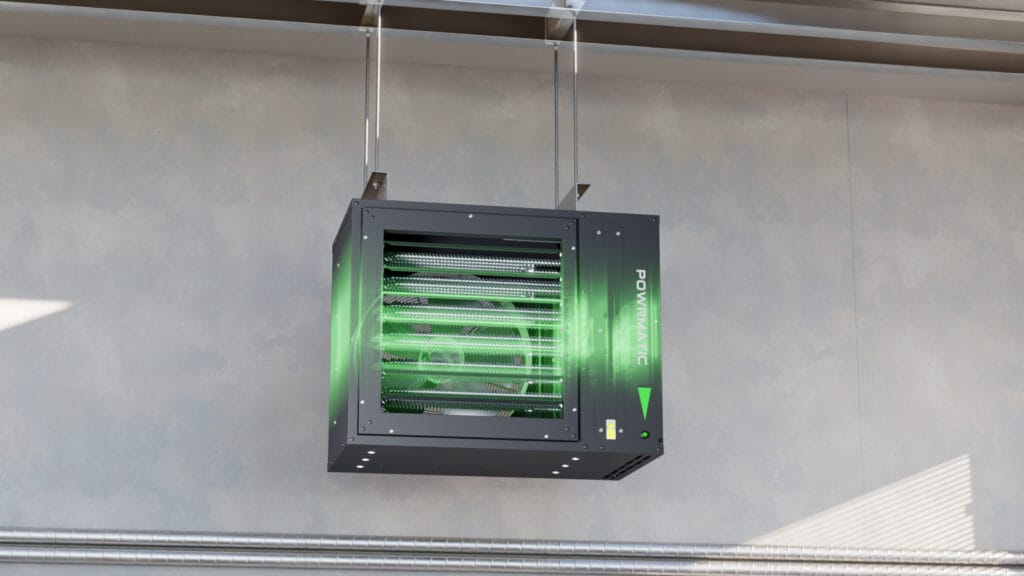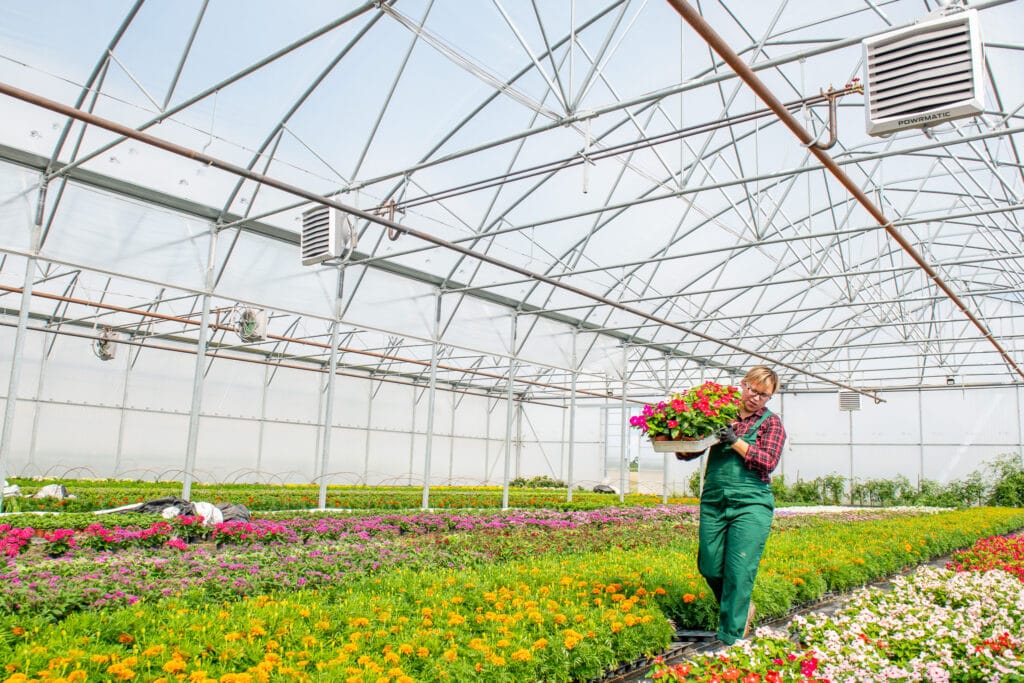As autumn approaches, garden centres face the same annual challenge: keeping large, airy retail spaces warm enough for customers to browse (and buy) while protecting margins and meeting decarbonisation goals. The right heating strategy isn’t one-size-fits-all—it’s a mix of technologies, zoning, and smart controls tailored to your buildings, fuels on site, and how each area is used.
Below is a clear, owner-friendly guide to the main options, where each shines, and how to combine them for comfort and cost efficiency.

Retail halls: typically high ceilings, frequent door openings, varied footfall through the day. Prioritise rapid warm-up, good air movement, and zone control.
Checkout, café, offices: smaller zones that benefit from independent setpoints and schedules.
Growing/plant areas: often colder, more humid, and more corrosive; equipment choices and finishes matter here (see “galvanised” note below).
Destratification fans: a low-cost essential in tall spaces to push warm air back down from high level, improving comfort and cutting run hours.
Smart controls: weather compensation, optimum start/stop, and door interlocks prevent waste and keep temperatures stable.

Best for: Large retail halls with gas or oil available on site; quick warm-up; predictable running costs.
Modern condensing appliances extract more heat from flue gases, improving seasonal efficiency.
Suspended units free up floor space and spread warmth evenly when paired with destratification.
Floor-standing cabinet units suit areas with service access at ground level or where roof structure limits hanging loads.
Pros: Fast response, strong airflow, competitive fuel costs (especially where gas tariffs are favourable).
Consider: Flue routes, combustion air, and periodic servicing. For oil, factor in tank location and deliveries.

Best for: Sites without gas, or as a zonal top-up where quick, flexible heat is required.
Simple to install with no flue; great for refurbishments or extending heat to a new retail corner.
Pros: Clean on site, responsive, low maintenance.
Consider: Electricity unit costs and capacity at your supply—often best used as part of a hybrid plan rather than the sole heat source.

Best for: Checkouts, café queues, till operators, info desks—anywhere people are static and feel the cold.
Radiant emitters heat people and surfaces directly, reducing the need to raise the whole hall’s air temperature.
Pros: Instant comfort, focused zones, minimal pre-heat.
Consider: Placement and aiming are critical; combine with background warm air for overall comfort.

Best for: Decarbonisation-led upgrades, especially where you want high efficiencies and cooling in summer.
Air-to-air systems can deliver 2–4+ units of heat per unit of electricity under many conditions.
Pros: Lower carbon intensity (especially with green electricity), potential summer cooling, good comfort control.
Consider: Performance drops in very low ambient temperatures—so plan for hybrid operation with gas/oil or electric back-up for the coldest snaps.

Best for: Sites favouring a central plantroom, or where multiple buildings/zones need a common heat source.
LTHW unit heaters or air curtains distribute heat from a central boiler or heat pump.
Pros: Centralised maintenance, easy zoning via valves and fans, flexible emitter types (unit heaters, fan convectors, air curtains).
Consider: Pipework runs and pump energy; ensure proper balancing and weather-compensated control for best seasonal efficiency.

Gas (or oil) for background + electric radiant at points of sale: Keep the hall comfortably warm while delivering extra “felt heat” where staff and customers linger.
Heat pumps for most days + gas back-up for cold snaps: Maximise low-carbon hours and hold down electricity demand peaks when it’s freezing.
Electric warm-air for extensions or pop-up retail zones: Add flexible heat without major flues or pipework, controlled on separate schedules.
LTHW backbone + mixed emitters: Use unit heaters in open retail, fan convectors in offices, and air curtains at entrances—all coordinated by a single control strategy.
Propagation houses and plant zones can be humid and mildly corrosive. Galvanised finishes and appropriately protected components improve longevity and reliability in these environments. Consider equipment designed for harsher conditions, plus good ventilation and moisture management to protect both plants and assets.

Fuel availability & tariffs: If you have mains gas, it often remains the lowest running-cost heat source per kWh of delivered heat. Where gas isn’t available, weigh electricity unit rates against potential heat pump efficiencies.
Operating pattern: Long hours and high setpoints favour technologies with the best seasonal efficiency (condensing gas, well-sized heat pumps, destratification). Intermittent use may favour fast-response warm air and radiant.
Carbon trajectory: If you’re on a roadmap to net zero, building in electrification capacity (even if you retain gas for resilience) makes sense. Hybrids let you capture low-carbon hours now while keeping customers comfortable on the coldest days.
Controls & maintenance: The cheapest kWh is the one you don’t use. Invest in zoning, optimum start/stop, and regular servicing—these often deliver double-digit percentage savings without changing plant.
Map your zones: retail hall, tills/queues, café, offices, entrances, growing areas.
Confirm fuels and electrical capacity; note flue routes and structural load limits.
Add destratification where ceilings are high.
Choose warm-air for background comfort; use radiant where people are stationary.
Consider a heat-pump-led or hybrid plan to lower carbon while protecting comfort.
Specify galvanised/protected heaters for humid growing zones.
Tie it together with smart, weather-compensated controls and clear schedules.
Every garden centre is unique. The heating season is around the corner, and warm staff and cosy customers spend more time—and more money—on site. Arrange a free site survey with Powrmatic to explore the best mix of warm-air, radiant, heat-pump, and LTHW options for your buildings, budget, and decarbonisation goals. We’ll assess your spaces, utilities, and controls, then propose a practical, efficient plan tailored to you.